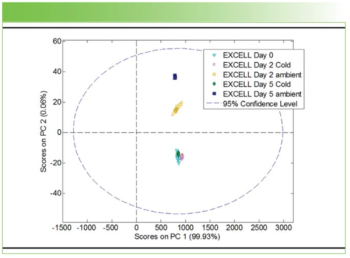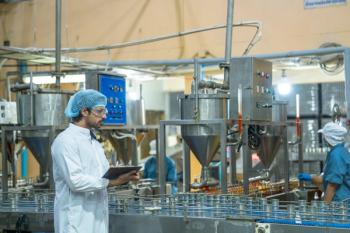
Reflecting on SciX 2023: Celebrating 50 Years of Analytical Chemistry
This year’s conference included 12 tracks with sessions highlighting everything from mail security to art analysis and AI.
Walking around the exhibit hall at SciX in Reno, Nevada, it was hard to not feel the energy. The theme of this year’s gala was “Back to the 1970s” and attendees took it to heart. It was easy to spot booths adorned with disco balls and other 70s decorations.
But there was also another type of energy in the air, one that can only be characterized by the excitement of uniting with colleagues from all around the world over a shared interest and passion for analytical chemistry, mostly involving measurements using the interaction of light with matter. If you listened closely in the bustle of the main exhibit hall, you could catch snippets of conversations between old friends reminiscing or sharing excitement about new projects.
This year was an exciting time at the SciX conference. Although Spectroscopy and its editors have had a traditional presence at SciX, this is the first time that the authors of this article have attended. Speaking to industry leaders, we were reminded of the pride that spectroscopists have for their work, an enthusiasm that we try to capture every day in our work on Spectroscopy.
As newcomers to writing about analytical chemistry and spectroscopy, we were eager to cover as much of the conference as we could – and we wanted to share some highlights with our readers.
Looking back
This
Griffiths, much like SciX, has come a long way since that first conference in Atlantic City. He’s co-authored 300 papers and has written, co-authored, or edited eleven books on analytical vibrational spectroscopy with an emphasis on Fourier transform-infrared (FT-IR) spectroscopy; Including one, titled “Fourier Transformation Infrared Spectrometry,” which Rohit Bhargava referred to as the “Bible” for his students.
“I think it’s very fair to say there are very few people that have had a greater influence on all of our lives as spectroscopists than Peter Griffiths,” said Bhargava, who is the Grainer Distinguished Chair for Engineering at the University of Illinois at Urbana-Champaign.
It’s clear that SciX has had a similar impact on the broader field of spectroscopy. The conference has a large following of loyal conferees who travel internationally to attend and share new ideas with one another.
Looking forward
SciX also gave us an opportunity to attend oral sessions and learn about spectroscopic research in industries we haven’t extensively covered. This year’s conference included 12 tracks with sessions highlighting everything from
There were sessions tailored specifically to early career professionals and the age-old debate of whether to pursue a career in industry or academia. During the early career session on atomic spectroscopy, Lyndsey Hendriks, an application scientist at Tofwerk, a manufacturer of high-performance mass spectrometers, spoke about how she chose to pursue a career in industry.
Every day is different, Hendriks said, and the opportunity to work on several evolving projects keeps her engaged. She’s also continued to publish research, a perk of her position that she enjoys.
We’d also be remiss not to mention our Emerging Leader in Molecular Spectroscopy awardee, Dmitry Kurouski, who delivered an excellent plenary session about the work of his group at Texas A&M University. Kurouski spoke about work the team is doing on agriculture in Texas, with the goal of finding more sustainable food sources.
We both left Reno energized about the future of the industry. This research is impacting our world in various ways, and the enthusiasm of attendees highlights that they have found both meaning and purpose in their work.
This year’s SciX conference did a great job highlighting the work that analytical scientists are doing to create a better future for people all over the world. We are looking forward to what this industry brings in 2024, and what work SciX 2024 will highlight.
Newsletter
Get essential updates on the latest spectroscopy technologies, regulatory standards, and best practices—subscribe today to Spectroscopy.




